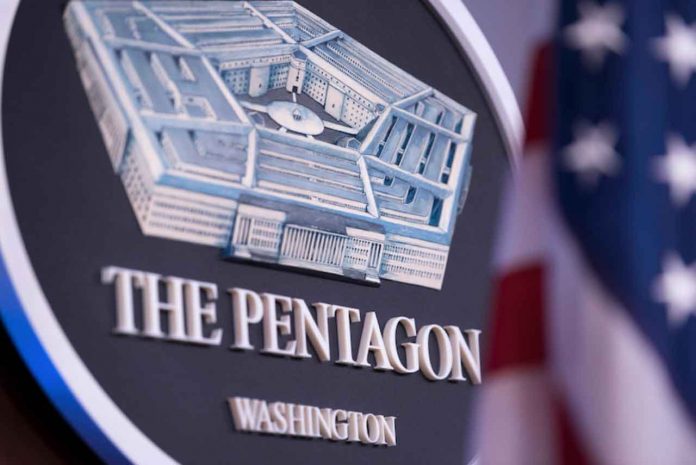WASHINGTON – NEWS – The United States military is diligently working to implement the strategy for an increasingly important region of the world: The Arctic.
Amanda Dory, the acting undersecretary of defense for policy, spoke last week at the Wilson Center about the recently announced revamp of DOD strategy in the High North and why it is important for defense.
Deputy Secretary of Defense Kathleen Hicks announced the new strategy on July 22, but now comes the hard part, Dory said. “While the strategy release is exciting, it’s really the implementation that is the proof of the pudding, and it takes a lot of players to successfully implement anything,” she said.
The strategy has to include the joint force, interagency partners and U.S. allies and partners.
The previous DOD strategy for the region came out in 2019, but much has changed in the region and world since then. While the strategic environment has changed dramatically, climate change is rapidly altering the Arctic, Dory said.
The region “is warming three times faster than the rest of the world,” she said. “Melting ice and warmer temperatures, they affect DOD operating context, and lead to increased human activity, including from our competitors.”
Russia, with its large area above the Arctic Circle, is an obvious competitor, but China is also a player. “The People’s Republic of China … seeks increased access and influence in the region and leverages the changing Arctic dynamics to take advantage of Arctic resources and to seek a larger role in regional governance,” she said.
Russia has continued its expansion and modernization of Arctic military infrastructure. “The Arctic has long played a significant role in Russia’s security approach and economic calculations, and today is no exception,” Dory said. “Russia’s Arctic military capabilities have the potential to hold the U.S. homeland, as well as allied and partner territories, at risk.”
China and Russia are growing together and have held combined naval patrols in the region. DOD continues to monitor this cooperation very closely.
“On the other side of the equation, the addition of Finland and Sweden as NATO allies presents an opportunity to deepen collaboration on Arctic security issues and strengthen security and defense and deterrence in the region,” she said. “So, along with the evolution of the Arctic geopolitically, the Department is also evolving our approach to the region. And the strategy seeks to update this approach so that it is fit for purpose for this new era in the Arctic.”
More land is available in the region and sea lanes are opening. More ships, planes, people are in the region, and this could increase the risk of strategic competition and miscalculation in the region, Dory said. That is why the strategy — really a roadmap for cooperation — is so important, the acting undersecretary said.
“The Arctic strategy itself is transparent about the challenges that we face in order to underscore the urgency of addressing them,” she said. “It provides an action-oriented approach to address these challenges and to realize our strategic guiding light.”
The end state, she said, is that DOD, in cooperation with allies and partners, looks to preserve the Arctic as a stable region in which the U.S. homeland remains secure and vital national interests are safeguarded. “We spend the bulk of the strategy for diving into the ways we intend to get to that end state,” she said.
There are three main lines of effort. The first is to enhance domain awareness and capabilities to campaign in the Arctic. These are the day-to-day operations, activities and investments in the region. The second line of effort is to engage with allies and partners. “The third is exercising a calibrated presence in the region,” Dory said.
Dealing with allies and partners is really key to this effort, she said. Cooperation in the Arctic continues America’s greatest asymmetric advantage: the network of allies. “The Arctic has a unique concentration of like-minded and highly capable allies,” she said. “Canada, Norway, Denmark, Iceland and our two newest NATO allies, Finland and Sweden, all bring substantial regional know-how and capability that strengthens our collective efforts to monitor and respond in the Arctic.”
There is already a baseline for this effort. For example, “the U.S. Marine Corps has long maintained pre-positioned combat equipment in Norway to improve our ability to respond rapidly alongside Arctic allies should deterrence fail,” Dory said. “We’ve also increased rotations of maritime patrol aircraft to Iceland to improve maritime domain awareness when necessary and will continue to participate in Icelandic air policing efforts.”
The United States has also signed defense cooperative agreements with Sweden, Finland and Denmark, and updated a similar long-standing agreement with Norway. “In Europe and North America, we’ve enhanced our tailored presence through U.S. participation in exercises like Nordic Response in the European Arctic, and Arctic Edge in Alaska. Allies and partners are also a source of innovation and we’re working together to develop and feel the next generation of Arctic capabilities.”
Canada and the United States are already modernizing for the North American Aerospace Defense Command, and the United States is interoperable with a number of partner nations in the F-35 jet program and the P-8 Poseidon maritime patrol aircraft. “We’re building innovative partnerships such as one with Norway, which is hosting a U.S. payload aboard Norway’s Arctic satellite broadband mission, bring much needed communications capabilities to our strategic users in the Arctic region,” Dory said.
“Going forward, we will look to identify opportunities to collaborate more closely on Arctic capabilities research, development and acquisition,” she said. “Additionally, we’ll explore ways to deepen intelligence and information sharing to maintain a shared threat perception of the Arctic region.”
DOD looks to work more closely with U.S. entities as well, from the U.S. Coast Guard to state government entities to Alaskan natives to industry partners. “We support the Coast Guard’s program to strengthen U.S. icebreaking capability, as it enables a key capability to ensure interoperability between the U.S. Coast Guard and U.S. Navy vessels, and to support U.S. presence in the Arctic,” Dory said. “The recent announcement of U.S., Canada and Finland to collaborate on icebreaker production is yet another example of the incredible cooperation potential among Arctic allies to drive collective innovation and capabilities.”





